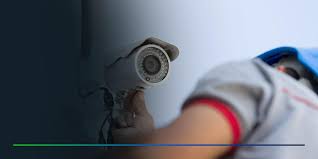Security cameras have become an integral part of modern life, security cameras installation offering enhanced safety and peace of mind to homeowners, businesses, and public spaces. With advancements in technology, these devices have evolved significantly from their early incarnations, becoming more sophisticated, accessible, and efficient. This article delves into the history, technology, applications, and future trends of security cameras, providing a comprehensive understanding of their role in today’s world.
A Brief History
The concept of surveillance using cameras dates back to the early 20th century. The first documented use of CCTV (closed-circuit television) technology was in Germany in 1942 for observing rocket launches. By the 1960s, the technology had begun to spread to commercial and governmental applications, particularly for security purposes. The introduction of digital video recording (DVR) systems in the 1990s revolutionized the industry, allowing for better storage and retrieval of footage. In the 21st century, the advent of Internet Protocol (IP) cameras further transformed surveillance, enabling remote viewing and more sophisticated features.
Types of Security Cameras
- Analog Cameras: The traditional form of security cameras, which transmit video over coaxial cable to a DVR. These are becoming less common as digital technologies advance.
- IP Cameras: These cameras send video data over a network, offering higher resolution and more advanced features such as remote access and integration with other smart devices.
- Wireless Cameras: A subset of IP cameras, these connect to a network via Wi-Fi, making installation easier and more flexible.
- PTZ Cameras (Pan-Tilt-Zoom): These cameras can be remotely controlled to move left, right, up, down, and zoom in and out, providing extensive coverage with a single device.
- Dome Cameras: Known for their dome-shaped housing, these are commonly used in retail and other indoor environments due to their discreet appearance.
- Bullet Cameras: These cameras have a long, cylindrical shape and are typically used for outdoor surveillance, offering clear and focused video over a longer distance.
- Thermal Cameras: Utilizing heat detection rather than visible light, these cameras are useful in low-light or obscured conditions, such as smoke or fog.
Key Features and Technologies
- High Definition (HD) and 4K Resolution: Modern security cameras offer high-definition video quality, providing clear and detailed images that are crucial for identifying intruders and other security incidents.
- Night Vision and Infrared (IR) Capabilities: Many cameras are equipped with IR LEDs that allow for recording in complete darkness, extending the functionality of the camera around the clock.
- Motion Detection and Alerts: Advanced motion detection technology can trigger recording and send alerts to the owner, ensuring that suspicious activities are promptly addressed.
- Cloud Storage and Remote Access: Storing footage in the cloud offers enhanced security and accessibility. Users can view live feeds and recorded footage from anywhere via their smartphones or computers.
- AI and Machine Learning: Modern cameras often incorporate AI to enhance security measures, such as recognizing faces, license plates, and distinguishing between humans and animals.
Applications of Security Cameras
- Home Security: From deterring burglars to monitoring package deliveries, security cameras are a staple in residential security systems.
- Business and Commercial Use: Retail stores, offices, and warehouses use surveillance to prevent theft, ensure employee safety, and monitor operations.
- Public Safety: Cities and municipalities deploy cameras in public spaces like parks, streets, and transportation hubs to enhance safety and deter crime.
- Healthcare: Hospitals and clinics use surveillance to monitor patient safety and secure sensitive areas like pharmacies and research labs.
- Industrial Use: Factories and construction sites use cameras to ensure safety protocols are followed and to monitor equipment and processes.
Future Trends
The future of security cameras is promising, with ongoing advancements likely to introduce even more sophisticated features:
- Integration with Smart Home Ecosystems: Security cameras will increasingly be part of broader smart home systems, working in tandem with other devices like lights, locks, and alarms.
- Enhanced AI Capabilities: Future cameras will have improved AI, enabling them to make more accurate predictions and automate responses to security threats.
- 5G Connectivity: The rollout of 5G technology will provide faster data transmission and lower latency, enhancing the real-time capabilities of security systems.
- Biometric Integration: Cameras will increasingly use biometric data for enhanced security, such as facial recognition for access control.
Conclusion
Security cameras have come a long way from their early days, evolving into sophisticated devices that play a crucial role in modern security systems. With continuous technological advancements, they offer increasingly comprehensive and reliable security solutions for homes, businesses, and public spaces. As technology progresses, the integration of AI, 5G, and other innovations will further enhance the capabilities of these essential devices, ensuring they remain at the forefront of security and surveillance.



